Struggling to find a promotional item with real value? Your competitors' logos are on everything, but you need an edge. Offering customizable stainless steel mugs is your answer.
For brand owners and importers, offering customizable stainless steel mugs is a winning strategy. They provide powerful branding on a product your customers will actually use and love. The high-quality base material is durable, safe, and keeps drinks at the perfect temperature, building real brand loyalty.
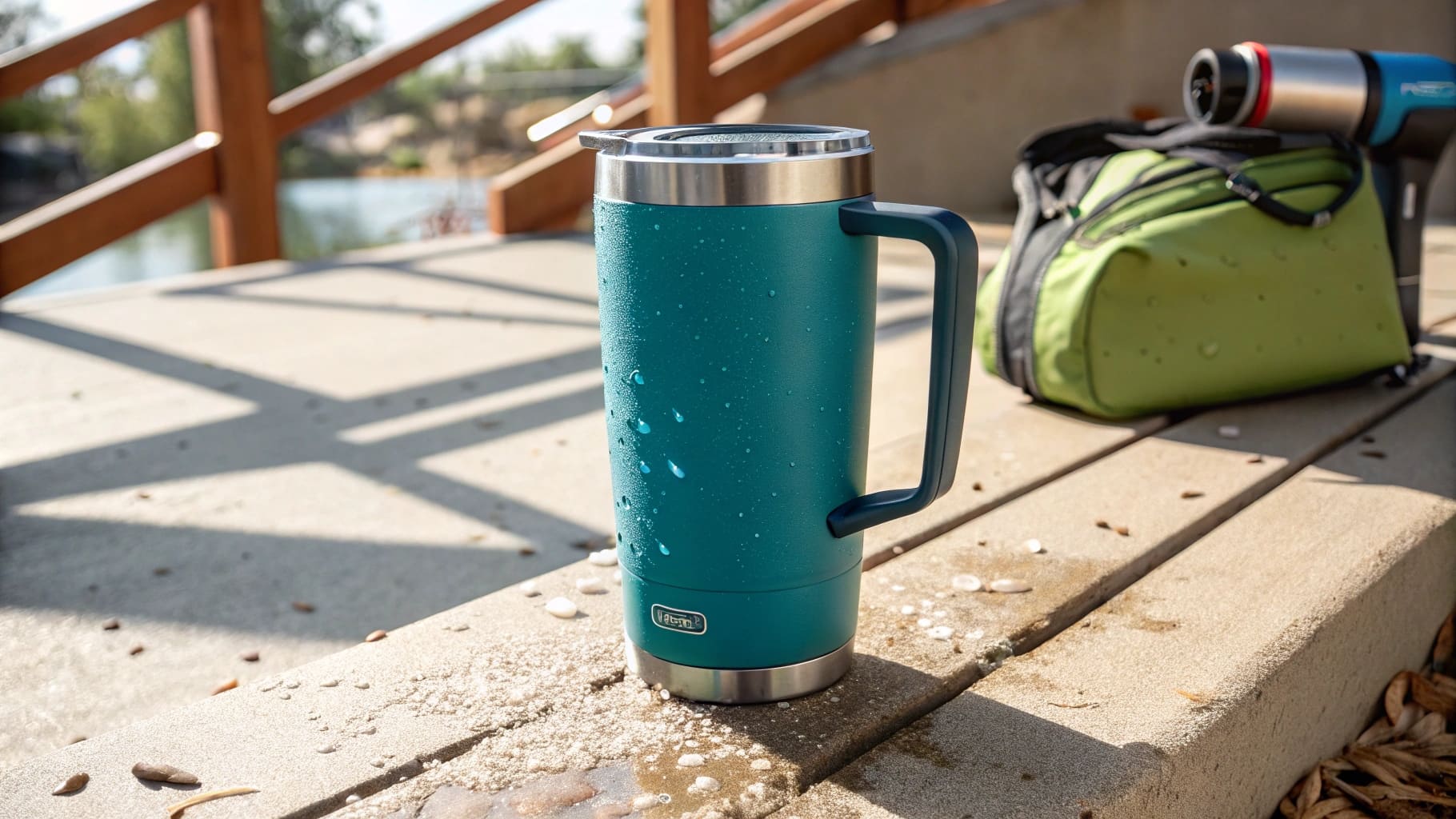
I've worked with many brand owners like Mark from Canada, who purchase large quantities of water bottles and mugs from my company, Icobottle. He understands that a product with his brand on it must be high quality. It’s not just about a logo; it's about the customer's daily experience. This is why understanding the details of the product, from cleaning to the material itself, is so important. These details are what turn a simple mug into a valued possession and a great business decision. You need to know the answers to your own customers' questions before they even ask.
What is the Best Way to Clean a Stainless Steel Mug?
Your branded mug is covered in coffee stains. It looks bad and can ruin the taste of fresh drinks. Luckily, cleaning stainless steel is very simple.
The best way to clean a stainless steel mug is with a paste of baking soda and water. For daily cleaning, warm soapy water is enough. Always avoid steel wool or harsh chlorine bleach, as they can damage the protective layer of the steel and cause rust.
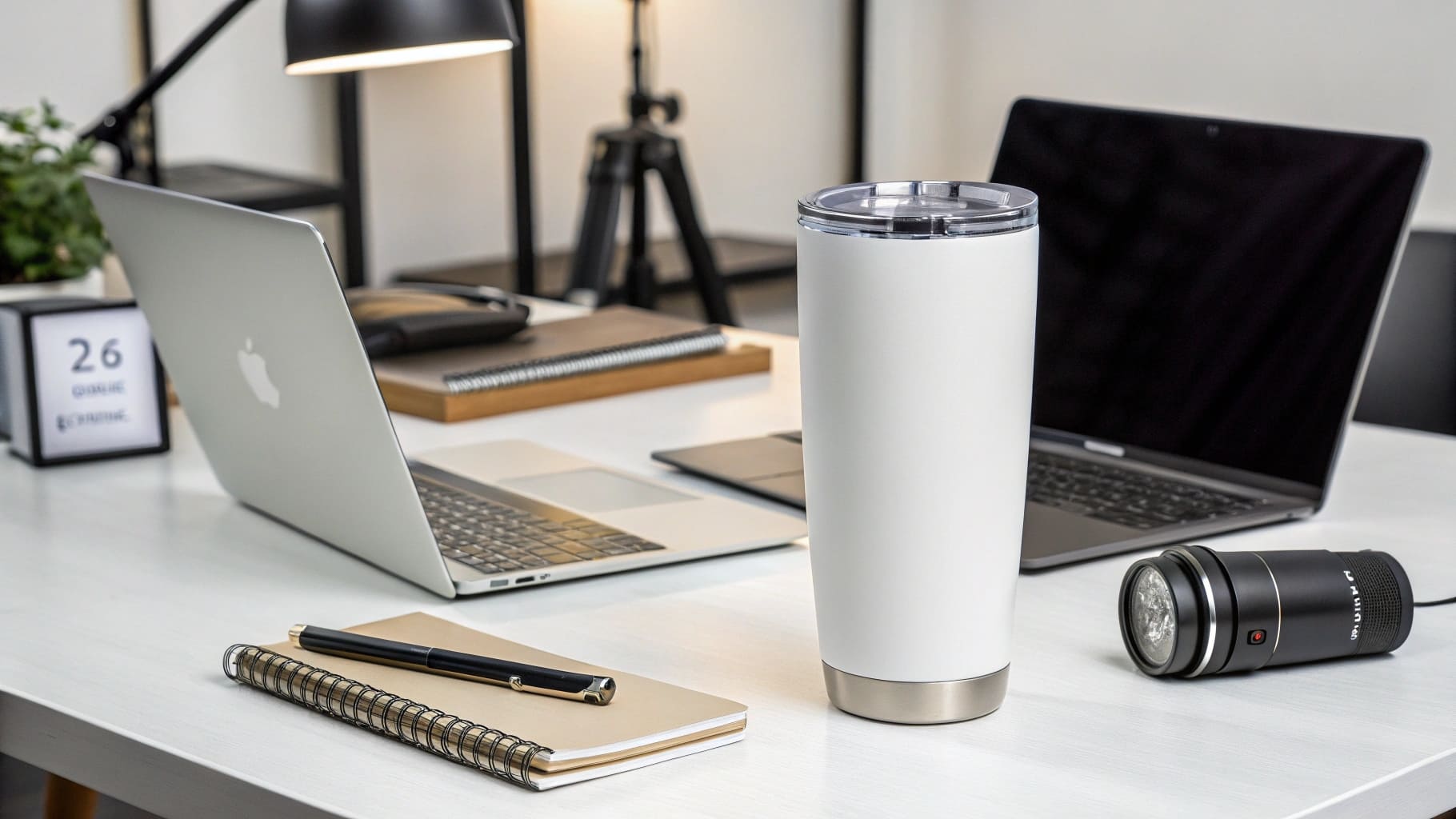
Proper cleaning ensures your mugs last a long time and always look good. It's a key selling point for your customers. You can tell them that maintenance is easy. There are two main ways to clean them.
Daily Cleaning
For everyday use, simple is best. Just use warm water and a mild dish soap. A soft sponge or cloth is perfect. This gentle method removes fresh coffee or tea residue without any risk of scratching the surface. It’s quick, easy, and effective for keeping the mug ready for its next use.
Deep Cleaning for Stubborn Stains
Sometimes, stains build up. I had a client who was worried about this. I told him to recommend a simple trick to his customers. Make a paste with baking soda and a little water. Apply the paste to the stained areas and let it sit for about 15 minutes. Then, scrub gently with a soft brush and rinse well. This removes tough stains without harsh chemicals.
| Method | What to Use | What to Avoid |
|---|---|---|
| Do's | Warm soapy water, soft sponge, baking soda paste | Harsh chemicals, bleach |
| Don'ts | Steel wool, abrasive scrubbers, hard brushes | Scratching the surface |
Can You Put Coffee in a Stainless Steel Mug?
You worry that a metal mug will ruin your coffee. A morning brew with a weird, metallic taste is a terrible start to the day. You can relax, stainless steel is perfect.
Yes, you can definitely put coffee in a stainless steel mug. High-quality, food-grade stainless steel1 is non-reactive. This means it doesn't transfer any taste to your drink. It keeps your coffee tasting exactly like it was meant to taste, from the first sip to the last.
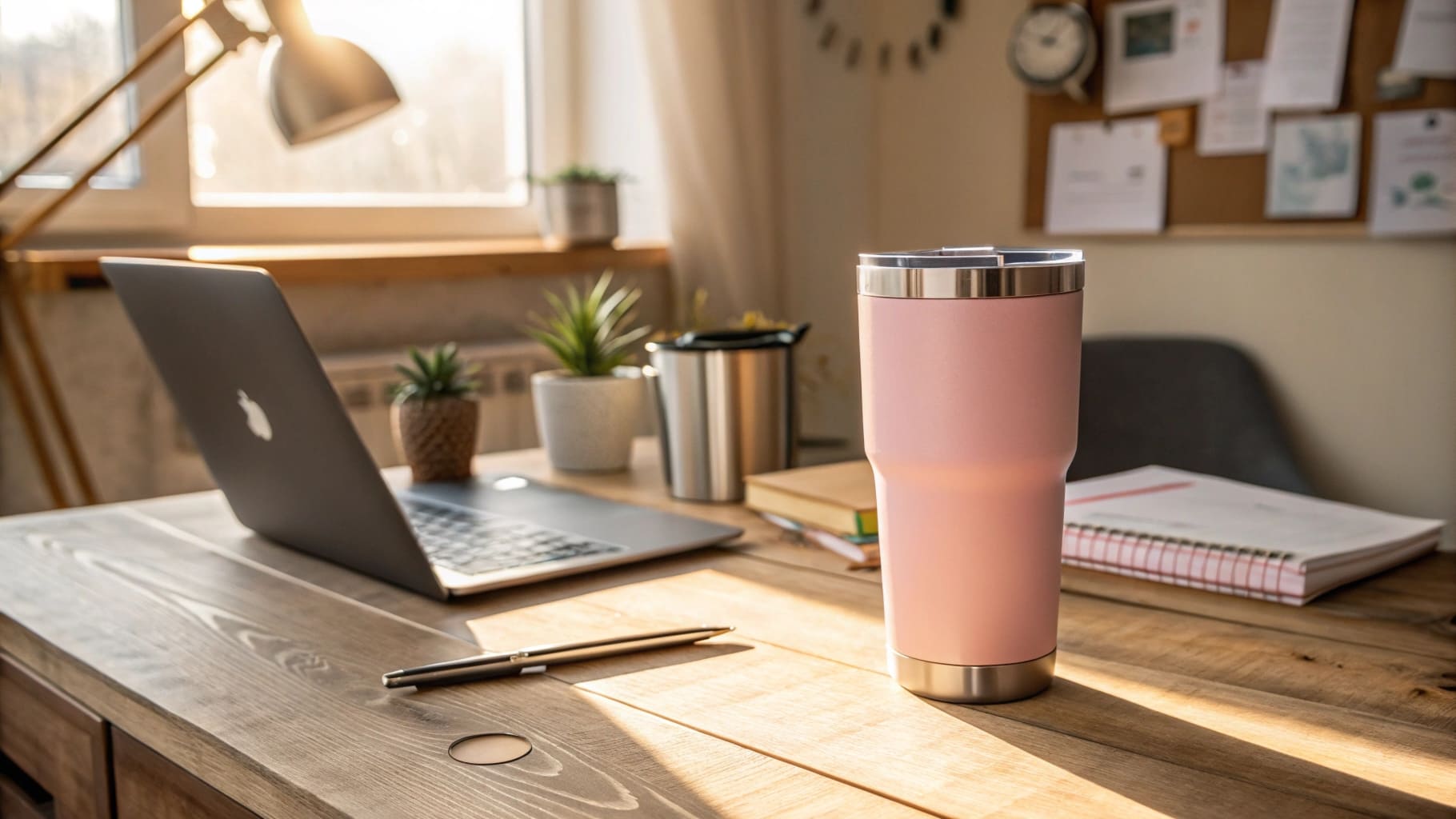
The compatibility of stainless steel with coffee is a major reason these mugs are so popular. For B2B buyers, especially those catering to coffee brands or corporate offices, this is a critical piece of information. You are not just selling a mug; you are selling a better coffee experience.
No More Metallic Taste
I often speak with procurement officers who are very focused on quality. One of their first questions is about taste. I always explain that the key is "food-grade" stainless steel, specifically type 304. This material has a protective layer that prevents any reaction between the metal and the acidic coffee. The result is pure coffee flavor, with no metallic aftertaste.
Superior Temperature Retention
Besides taste, temperature is everything for coffee lovers. A huge benefit of stainless steel mugs, especially the double-walled vacuum-insulated2 ones we produce at Icobottle, is their ability to keep coffee hot for hours. Ceramic mugs lose heat quickly. Plastic can warp or retain old flavors. Stainless steel solves these problems, delivering hot, fresh-tasting coffee long after it's been poured. This feature alone makes it a premium product.
What is the Best Metal for Mugs?
Choosing the right material for your branded merchandise is confusing. The wrong choice can lead to unhappy customers and a damaged brand reputation. Stainless steel is your best and safest bet.
For mugs, the best metal is food-grade stainless steel, like type 304 (also known as 18/8). It offers the perfect combination of durability, safety, and performance. It doesn't rust easily, won't break if dropped, and keeps drinks at the right temperature, making it a reliable choice.
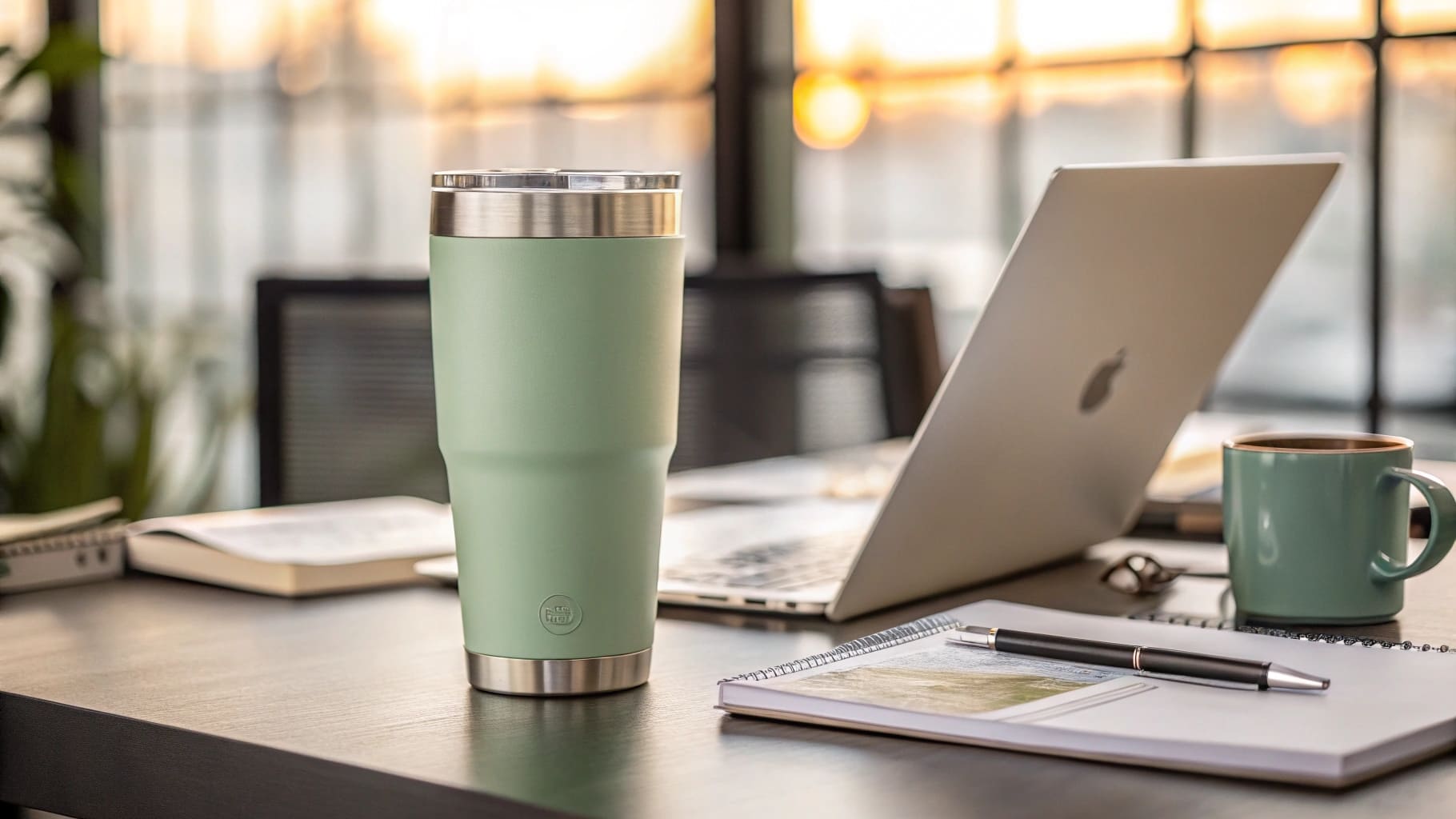
When you're sourcing products, understanding the material options is crucial. Your choice impacts quality, cost, and customer safety. Let's break down why stainless steel comes out on top compared to other metals used for drinkware.
Why Stainless Steel Wins
Stainless steel is the industry standard for a reason. It is incredibly durable and resists dents and scratches from daily use. Most importantly, it's non-porous and non-reactive, so it doesn’t absorb odors or flavors and it's completely safe for contact with food and beverages. This mix of strength and safety is unmatched.
Other Metal Options
Aluminum is lightweight and cheap, but it's not as strong and can dent easily. It also reacts with acidic drinks unless it has a special lining, which can wear away over time. Copper mugs are stylish, especially for certain cocktails, but they require a lot of maintenance to prevent tarnishing and are not suitable for hot drinks.
| Feature | Stainless Steel (304) | Aluminum | Copper |
|---|---|---|---|
| Durability | Very High | Medium | Low |
| Safety | Excellent (Non-reactive) | Requires Lining | Can be Reactive |
| Maintenance | Low | Low | High |
| Heat Retention | Excellent | Poor | Good |
Are Stainless Steel Mugs Good for Coffee?
Coffee drinkers can be very particular about their mugs. You don't want your company's branded mugs to be the ones they never use. The truth is, these mugs are fantastic for coffee.
Yes, stainless steel mugs are excellent for coffee. Their double-wall insulation3 keeps coffee hot for hours while the outside stays cool to the touch. The inert material also ensures the coffee's flavor profile is perfectly preserved, without any metallic interference. They are a top choice.
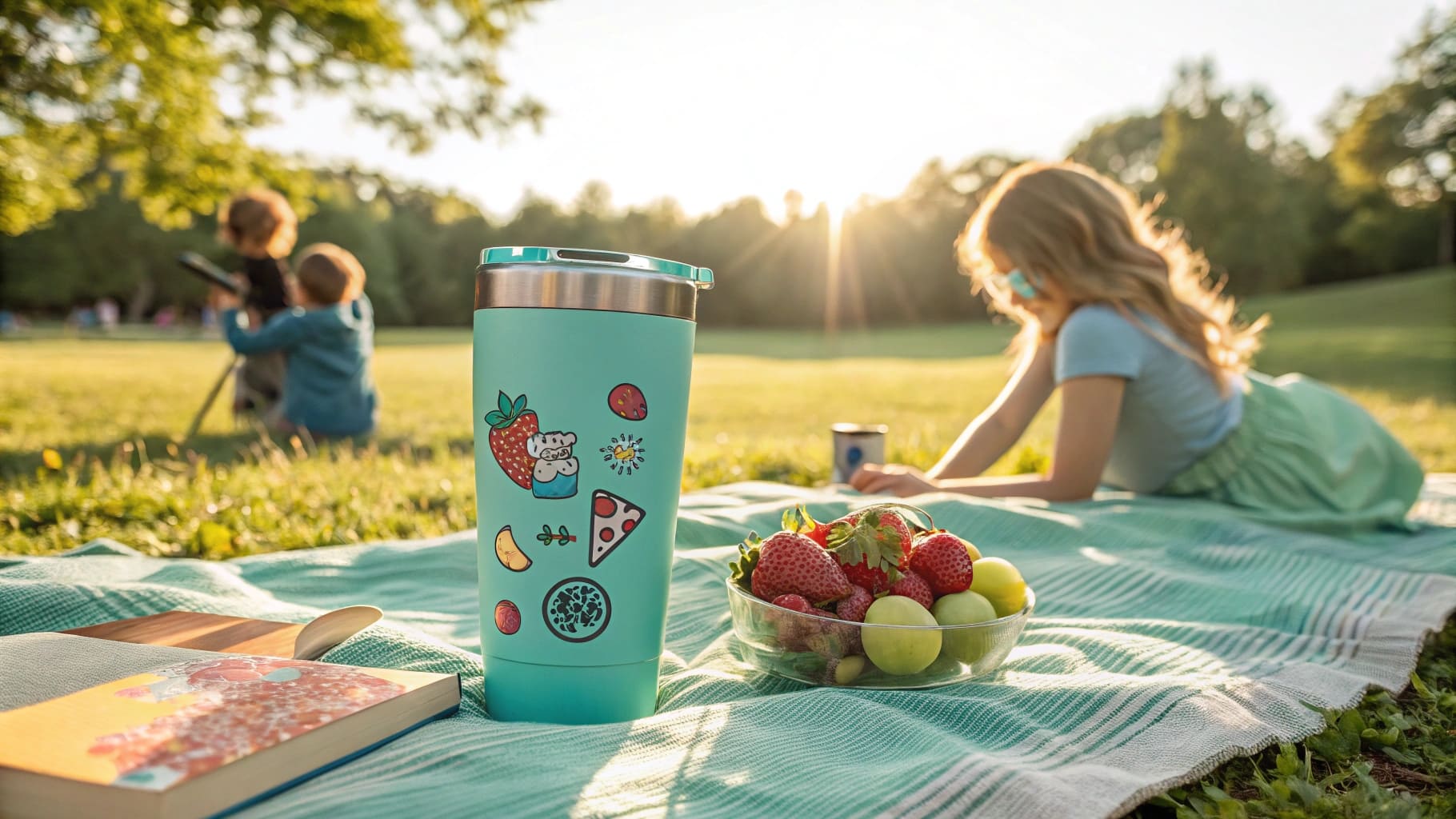
For anyone in the coffee business, from roasters to cafes, the mug is part of the product. My client Mark, who owns a brand in Canada, specifically sources our stainless steel mugs to co-brand with his coffee. He told me his customers love them. The feedback is always about two things: the coffee stays hot forever, and it tastes clean.
Preserving the Perfect Temperature
A common complaint with ceramic mugs is that the coffee gets cold too fast. A double-walled stainless steel mug solves this completely. The vacuum between the two walls of steel stops heat transfer. This means hot coffee stays hot, and iced coffee stays cold, for much longer. It lets your customers enjoy their drink at their own pace.
Protecting the Flavor Profile
Serious coffee drinkers can taste the difference between beans from Ethiopia and Colombia. The last thing they want is a mug that interferes with those delicate notes. Because food-grade stainless steel is non-reactive, it acts like a clean slate. It doesn't add or subtract any flavor, letting the quality of the coffee shine through. This makes it the perfect vessel for a premium beverage.
What is a Stainless Steel Mug Made Of?
The term "stainless steel" sounds simple, but it's not. Different types exist, and using the wrong one can be unsafe and bad for business. Knowing what to look for is key.
A quality stainless steel mug is made from an alloy, which is a mix of metals. The main components are iron, chromium, and nickel. The best type for drinkware is 18/8, or 304-grade, stainless steel. These numbers mean it contains 18% chromium and 8% nickel.
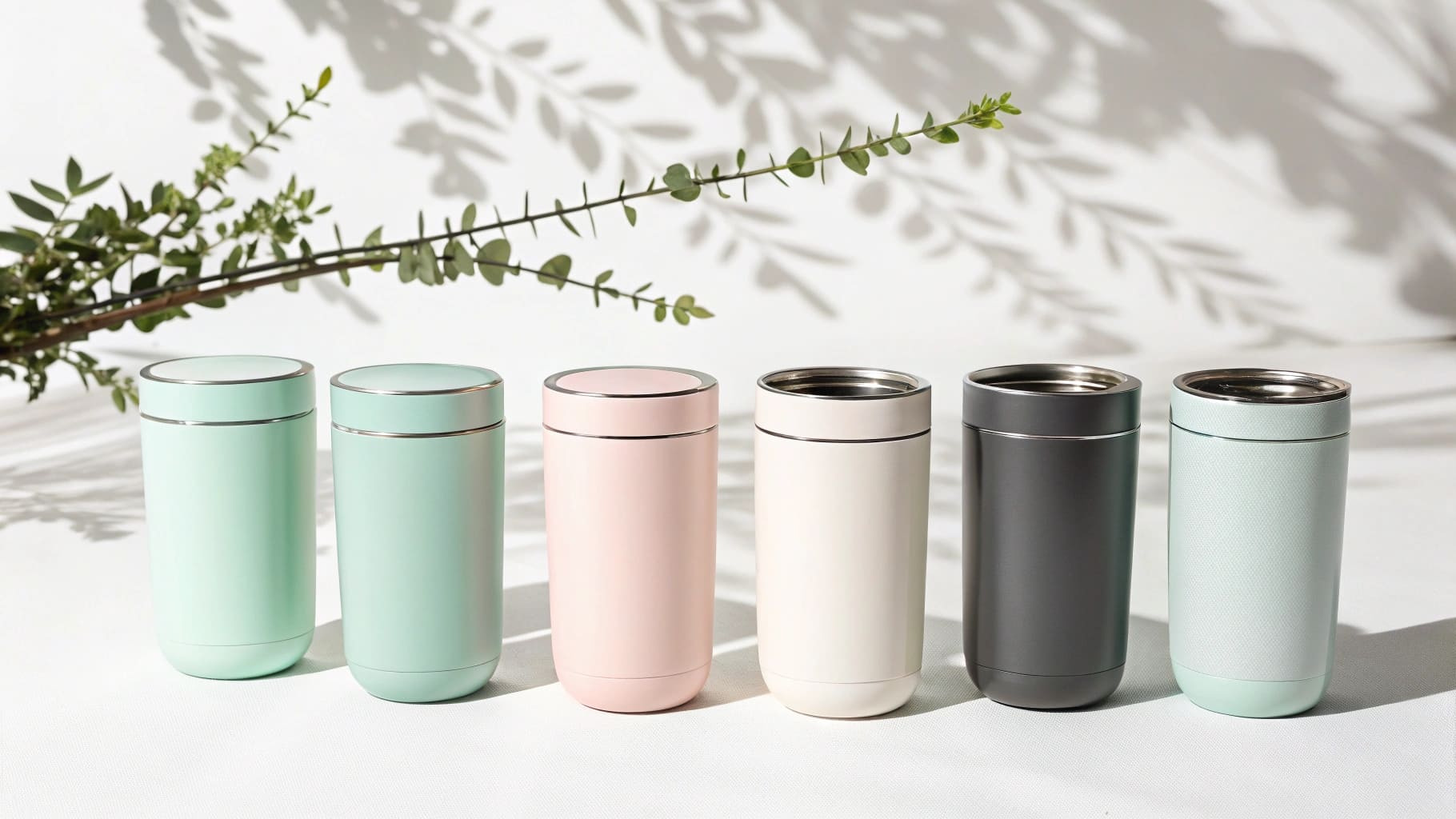
As a B2B buyer, you need to be confident in the safety and quality of your products. Understanding the material composition is not just technical detail; it's a guarantee of quality for your own brand. This is a topic I discuss frequently with clients, as it is the foundation of a good product.
The Key Ingredients
The magic of stainless steel comes from its ingredients. Iron forms the base, but it rusts on its own. Chromium is the most important addition. It reacts with oxygen to form a thin, invisible protective layer on the surface. This layer prevents rust and corrosion. Nickel enhances this rust resistance and adds durability.
Decoding the Numbers: 304 and 18/8
You will see the terms "304 grade" and "18/8" used for food-safe products. They mean the same thing.
- 18/8: Refers to the composition—18% chromium and 8% nickel.
- 304 Grade: This is the official name for this specific alloy in the steel industry.
Knowing these terms helps you verify that you are buying high-quality, food-safe products. It protects your customers and your business from issues like rust or certificate fraud from dishonest suppliers.
| Component | Percentage | Role in the Alloy |
|---|---|---|
| Iron | ~72% | The base metal |
| Chromium | ~18% | Creates a rust-proof layer |
| Nickel | ~8% | Improves durability and corrosion resistance |
Conclusion
Offering customizable stainless steel mugs is a smart investment. The material is durable, safe for all drinks, and easy to maintain, guaranteeing satisfaction and reflecting well on your brand.
-
Understanding food-grade stainless steel is crucial for ensuring your coffee tastes great and remains safe to drink. Explore this link to learn more! ↩
-
Discover how double-walled vacuum-insulated mugs can keep your coffee hot for hours, enhancing your coffee experience significantly. ↩
-
Understanding double-wall insulation can help you appreciate how it keeps your coffee hot for longer, enhancing your drinking experience. ↩

